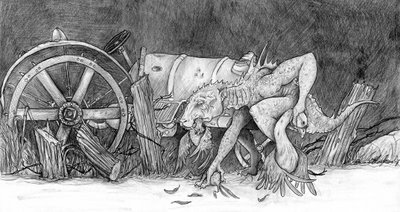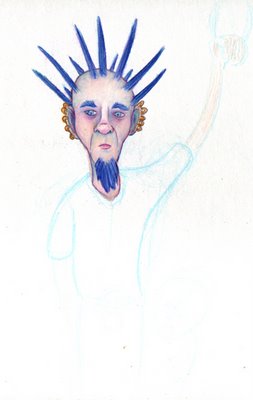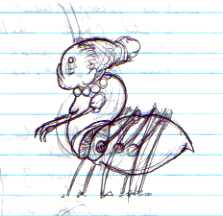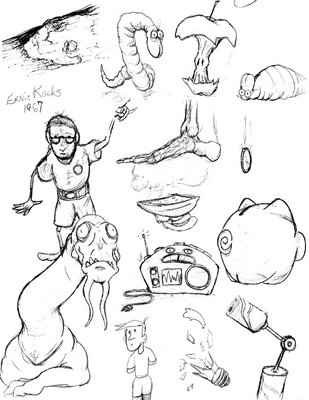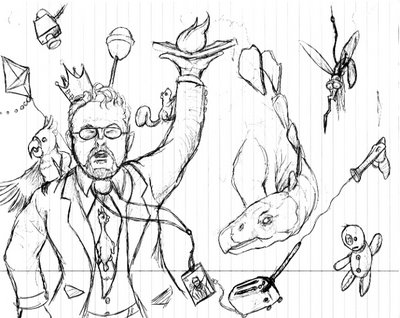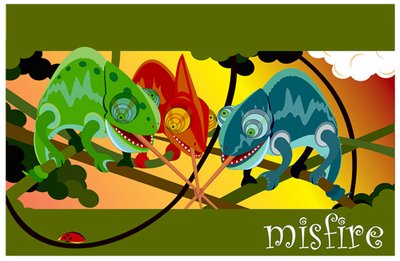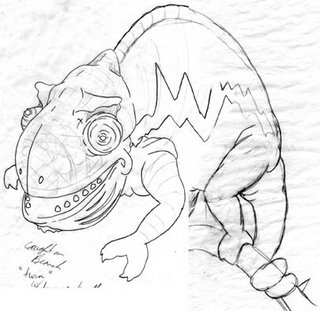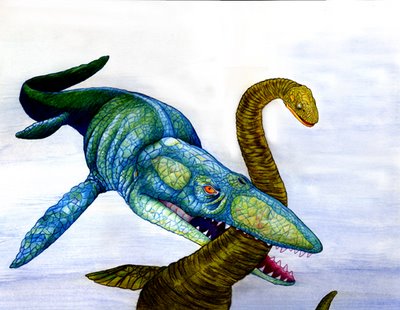
(Click to enlarge.)
After I drew the full body pic I knew I wanted to draw a closeup, more detailed pic. It took me until a couple of days ago (about 3 months) to get around to it...I debated about using colored pencil but decided to stick with graphite (2B and HB pencil) to stay in line with the first drawing and I knew it would be a lot quicker than with the color...plus I've always liked the look of graphite. One thing to remember, it is always a good idea to take a break from a drawing and go back to work on it with fresh eyes...and it also helps when working with graphite to use a piece of tracing paper under your drawing hand to keep from smearing the work so much.
Once I completed this I knew how to set the students project up. I pulled two descriptions of the chupacabras (cryptomundo.com and wikipedia), described one real weird looking animal, and pulled a description for a cryptid creature that turned out to be real (americanmonsters.com). The point...how descriptions, witnesses, and reality can often vary.
They are as follows:
Strange Animal One:
While a buddy and I was fishing we saw a strange animal swim underneath of us…It seemed like a cross between a fish, squid, and sea mammal of some sort. The skin was slick and ranged from a purple/pink to almost transparent around the ribs…there app
eared to be small spots on its nose’ like the coloration on a squid. And speaking of squid, that nose was like a composite of a duckbill and a squid’s tentacle…it almost reminded you of the form of women’s shoes during the middle ages. Its body was like that of a carp but with long flippers that looked like the nose…only slightly smaller. The eyes were set pretty high up on the head and were like two small black stones. Shortly behind the eyes was a single spine. The rear portion of the creature had two small fish-like fins, but the tail tapered off like a lizards, except it had small series of fins or feathers that lined the last ¾’s of it.
Strange Creature Two:
A lizard-like being, appearing to have leathery or scaly greenish-gray skin and sharp spines or quills running down its back. This form stands approximately 3 to 4 feet (1 to 1.2 m) high, and stands and hops in a similar fashion to a kangaroo. In at least one sighting, the creature hopped 20 feet (6 m). This variety is said to have a dog or panther-like nose and face, a forked tongue protruding from it, large fangs, and to hiss and screech when alarmed, as well as leave a sulfuric stench behind. Some reports note that the creatures have pronounced eye sockets, teeth, and claws.
Strange Creature Three:
A five-foot tall humanoid reptilian body, oval head and pointy chin, bulging red eyes, fanged teeth and long, darting tongue, no ears but with auditory holes. Small holes for nostrils and a lipless mouth. It had a thin neck and thin arms with three fingered hands that had sharp claws. Sometimes reported as having bat-like leathery wings.
Strange Creature Four:
Body the size of a camel with a similar face...slightly longer and narrower…leopard-like spots, and two, large, curving horns. Appears to be the result of the cross breeding of the two animals. There can appear to 5 such knotted horns on some of the animals. Long front legs and shorter rear legs. Long snake-like tail.
Students will then follow the creative process to do illustrations to be used for some Photoshop work and 'aged' soft book covers.



